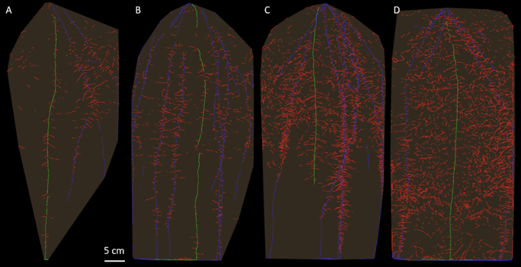Dr. Tobias Wojciechowski
Senior Scientist / Crop Physiologist
- Institute of Bio- and Geosciences (IBG)
- Plant Sciences (IBG-2)
Room 219
Most root research has focused on the gross architecture of roots to increase water access. However, past the seedling stage, most of the root system length is fine branch roots (less than 0.3 mm diameter). The Grass family includes cereals and pasture crops, and is the most widely grown and consumed crop group globally. Efficient water use in grass crops is critical to global water resource security. To discover if fine root structures are a source of traits for drought tolerance, a program of phenotyping a large panel of genotyped sorghum (Sorghum bicolor) varieties has been launched. Sorghum is a grass and is adapted to dry and hot environments.
